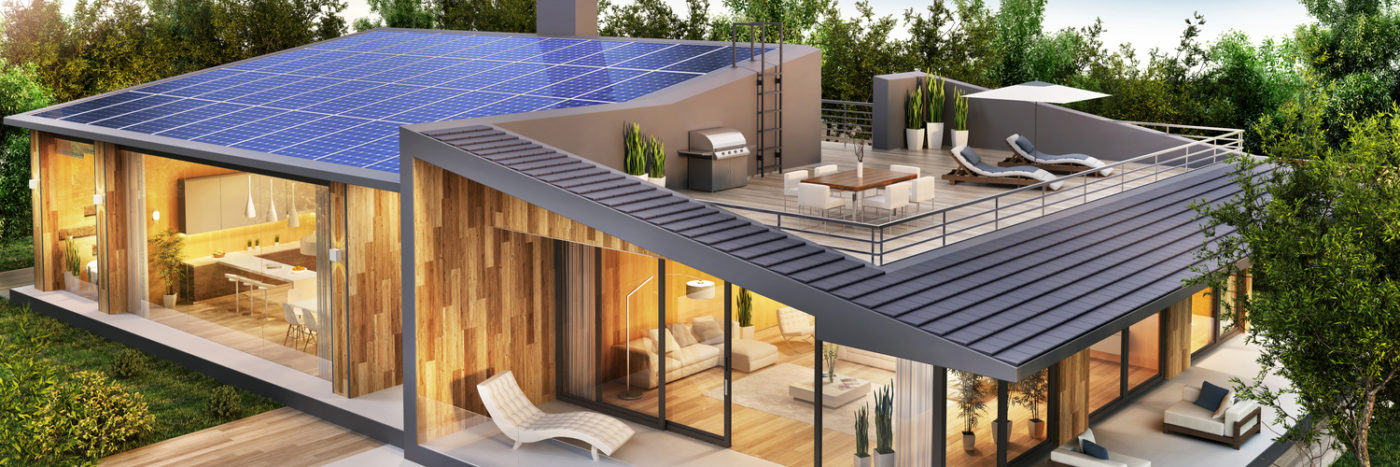Solar technology was once a big thing, but it fell off rather quickly because it couldn’t be applied, as it was expensive to build. However, in the past years, things have changed. Deployment has grown while the costs of solar design solutions have decreased.
When it comes to solar-ready buildings, their designs don’t have to be utilized straight away. If it makes no sense to install solar panels today, it might make sense in 5 years. It’s always a good idea to have options, especially as solar design technologies could become much better in the future.
Buildings with solar-ready designs are built so that solar photovoltaic systems can be installed in the future. The design of the building affects its solar capabilities. Here is how.
The Design of The Roof is Essential
A solar PV system is usually placed on the roof of the building. The first important thing is the material it’s made of. A PV system can be burdensome, and the roof needs to be able to withstand all that equipment. Overall, each square foot should be able to hold around 6 pounds on average.
On the other hand, the roof design should include the least equipment possible. This means that there will be more room for a solar system in the future. The wind pressures on the roof also need to be calculated to ensure that solar equipment can withstand them if installed.
Some roofs have tall walls going around the whole roof. They are made to ensure that nobody falls over and for esthetic reasons. These walls should be short enough to ensure that they won’t create any shade over solar panels, no matter the time of day.
Shading and Orientation Can Make Solar Systems Ineffective
For a building to have a solar design, it needs to include proper space for the placement of solar equipment that can function flawlessly. The first thing that needs to be considered is the orientation of the building. The area predetermined for the panels needs to be exposed to sunlight for most of the day.
This is how the system installed will have maximum efficiency. On sloped roofs, it’s best to install the system on the south side to avoid all the shading. Furthermore, when designing the roof, it needs to have at least one side that is exposed to the sun during the day.
This also means taking into account the surrounding buildings and vegetation. Placing the building so that nothing will disrupt the absorption of solar energy is essential.
Creating an Infrastructure for Future PV Systems
Solar designs don’t involve space only. They also need to be mounted and installed along with all of their equipment that allows them to function correctly. Some panels can be mounted only with penetrating hardware. This means that the roof’s concrete should have enough space for these mounts.
At the same time, the material of the roof can’t be weak and stiff. Apart from solar panels and an inverter, the PV system will also have an electrical panel located within the building. This means that the energy will have to travel from the roof and down into the building.
If one wants to do this, it’s necessary to install electrical conduits that will route the energy down. Even though this is possible later on, it can be more difficult and more expensive. By installing these conduits right away and leaving space for them, you will have no problem connecting a solar system on the roof.
PV System Design and Building Design
Even if the building isn’t going to have a PV system right away, future plans need to be taken into consideration. What will the electrical needs of the building be? Is there a need for electrical storage? How much electricity will the building itself need?
These are just some of the questions that need answering. Based on the answers, you can figure out what PV system design would suit the building. The size and style of the system, along with appropriate energy spending and production, will make it easier to design a proper surface for future use.
Still, with mechanical concept design, it is possible to get a custom-tailored system for your building. For this, however, it will be necessary to set aside extra funds. It’s not always possible to avoid using a new mechanical concept design, but you can always adjust the space for the majority of the PV system.
Permits and Zoning Laws can Affect Your Design
Zoning laws are essential, and they should be considered when looking at potential building design. Of course, zoning might allow you to build a building that is tall as you want it to be, but it might mean that another building might pop out next to yours and create shade.
This could destroy any potential for a solar roof system. Furthermore, before planning for solar systems, you need to check permits for these kinds of systems in the area and whether you can install what you need.
Some building designs where you might need to install a PV system could also be illegal, and you need to take those into account as well. Remember that, in some cases, there are exceptions for local laws. You can go to the local authorities and talk to them about your ideas and needs.
Summary
The best way to properly set up your solar building design is to get CAD design services. With these visual representations, you can easily customize your designs and see how everything will be laid out.

